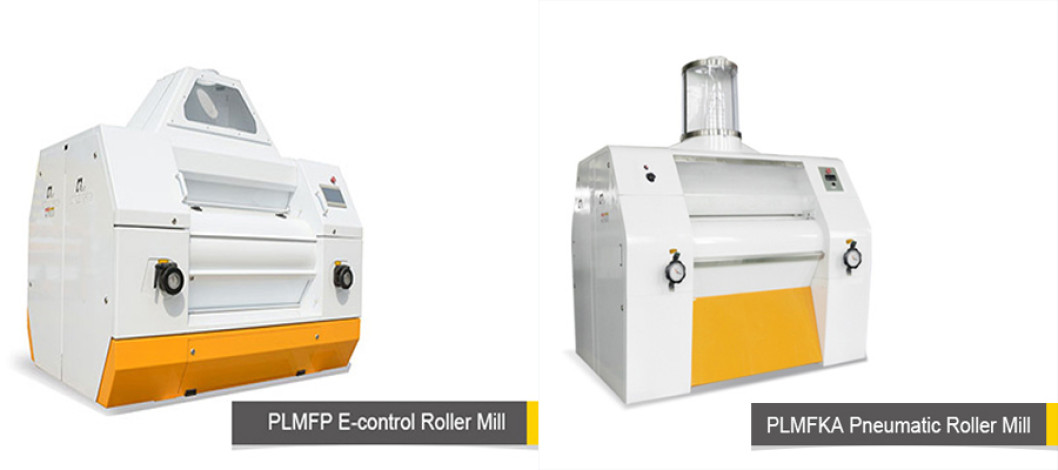
Roller mills are an essential component of the milling industry, used to process grains, including wheat, corn, and barley, into various forms of flour. Two commonly used types of roller mills are E-control and pneumatic roller mills. Both these types of mills offer unique features and benefits that make them suitable for different milling applications. In this article, we will discuss the difference between the E-control roller mill and the pneumatic roller mill.
Difference
Principle of Operation
The E-control roller mill operates using a system of motor-driven rollers that turn at different speeds to break down the grain. The rollers are connected to a computer that controls the speed of the rollers and the distance between them. This allows the miller to precisely control the milling process to produce flour with specific properties.
In contrast, the pneumatic roller mill operates using a system of compressed air that is used to move the grain through the milling process. The compressed air is used to create a vacuum that pulls the grain into the milling chamber and moves it through the rollers. The milling process is controlled by adjusting the pressure of the compressed air.
Control
The E-control roller mill offers precise control over the milling process, allowing the miller to adjust the speed of the rollers and the distance between them to produce flour with specific properties. The computerized control system used in the E-control roller mill also makes it easier to monitor the milling process and make adjustments as needed.
In contrast, the pneumatic roller mill offers limited control over the milling process, as it is mainly controlled by adjusting the pressure of the compressed air. While this can still produce high-quality flour, it may not be as precise as the control offered by the E-control roller mill.
Energy Efficiency
The E-control roller mill is known for its energy efficiency, as the computerized control system allows the miller to adjust the speed of the rollers based on the hardness of the grain. This means that the miller can use less energy to break down softer grains, while still achieving the desired flour properties.
In contrast, the pneumatic roller mill is less energy efficient, as it relies on compressed air to move the grain through the milling process. This requires a constant supply of compressed air, which can be expensive and energy-intensive.
Maintenance
The E-control roller mill requires regular maintenance to ensure that the computerized control system is working correctly. This may include cleaning the sensors, checking the connections, and updating the software. While this can be time-consuming, it is necessary to ensure that the mill is operating at peak efficiency.
In contrast, the pneumatic roller mill is relatively low-maintenance, as it does not have any complex computerized control systems. However, it may still require regular cleaning and lubrication to ensure that the rollers are functioning correctly.
Cost
The E-control roller mill is generally more expensive than the pneumatic roller mill due to the computerized control system and the precision it offers. This makes it more suitable for large-scale milling operations that require high-quality flour with specific properties.
In contrast, the pneumatic roller mill is generally more affordable and is suitable for smaller milling operations or for milling grains that do not require as much precision.
Output
The E-control roller mill offers a higher output capacity than the pneumatic roller mill, as the computerized control system allows the miller to adjust the speed of the rollers to process the grain more efficiently. This means that the E-control roller mill can produce more flour in less time than the pneumatic roller mill.
In contrast, the pneumatic roller mill has a lower output capacity due to the reliance on compressed air to move the grain through the milling process.
In conclusion, both the E-control roller mill and pneumatic roller mill offer unique benefits and features that make them suitable for different milling applications. If you want to know more information about the E-control roller mill and pneumatic roller mill, please contact us. We will provide professional answers.
Source:
Online/GFMM
Comment Now